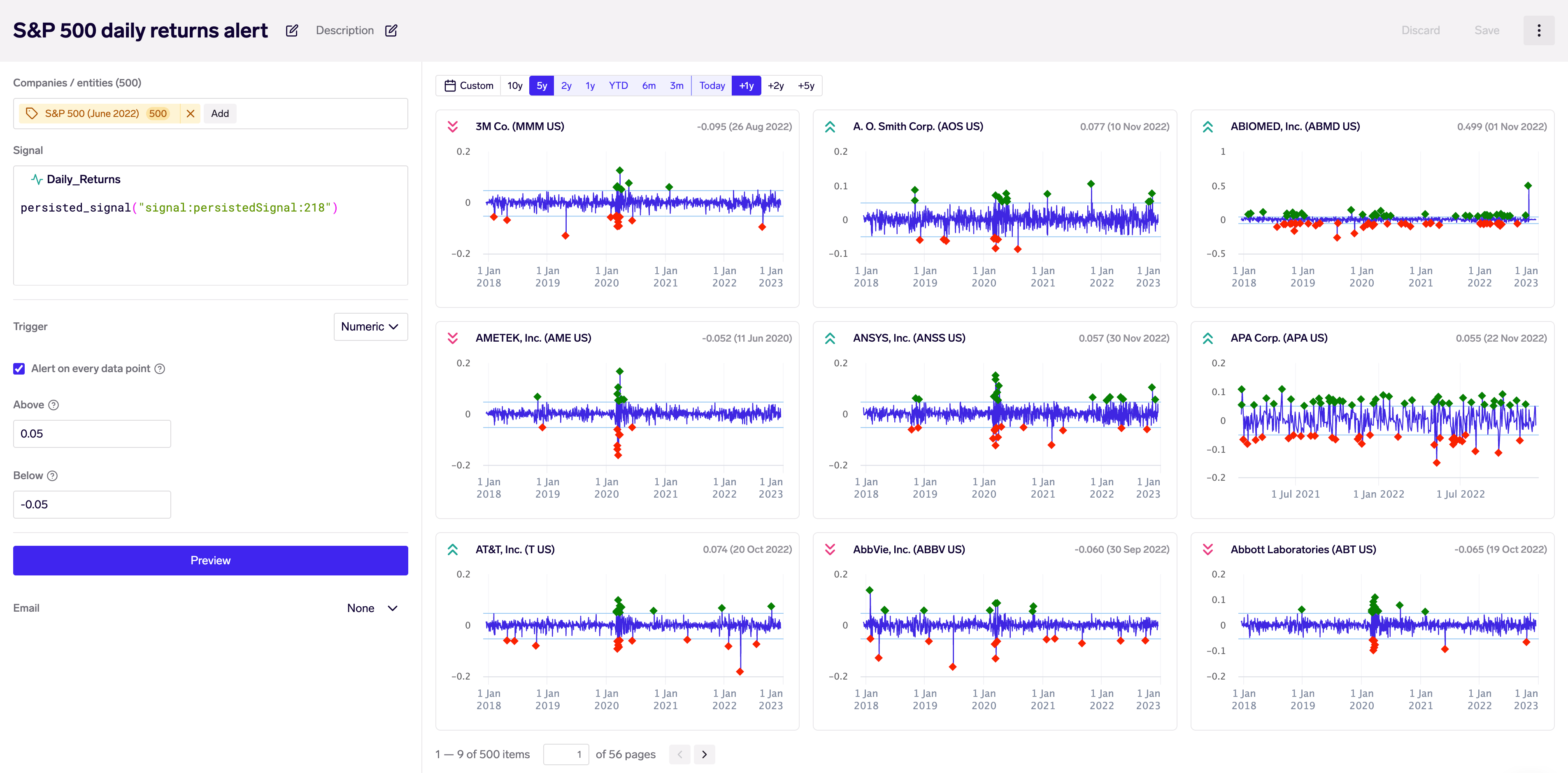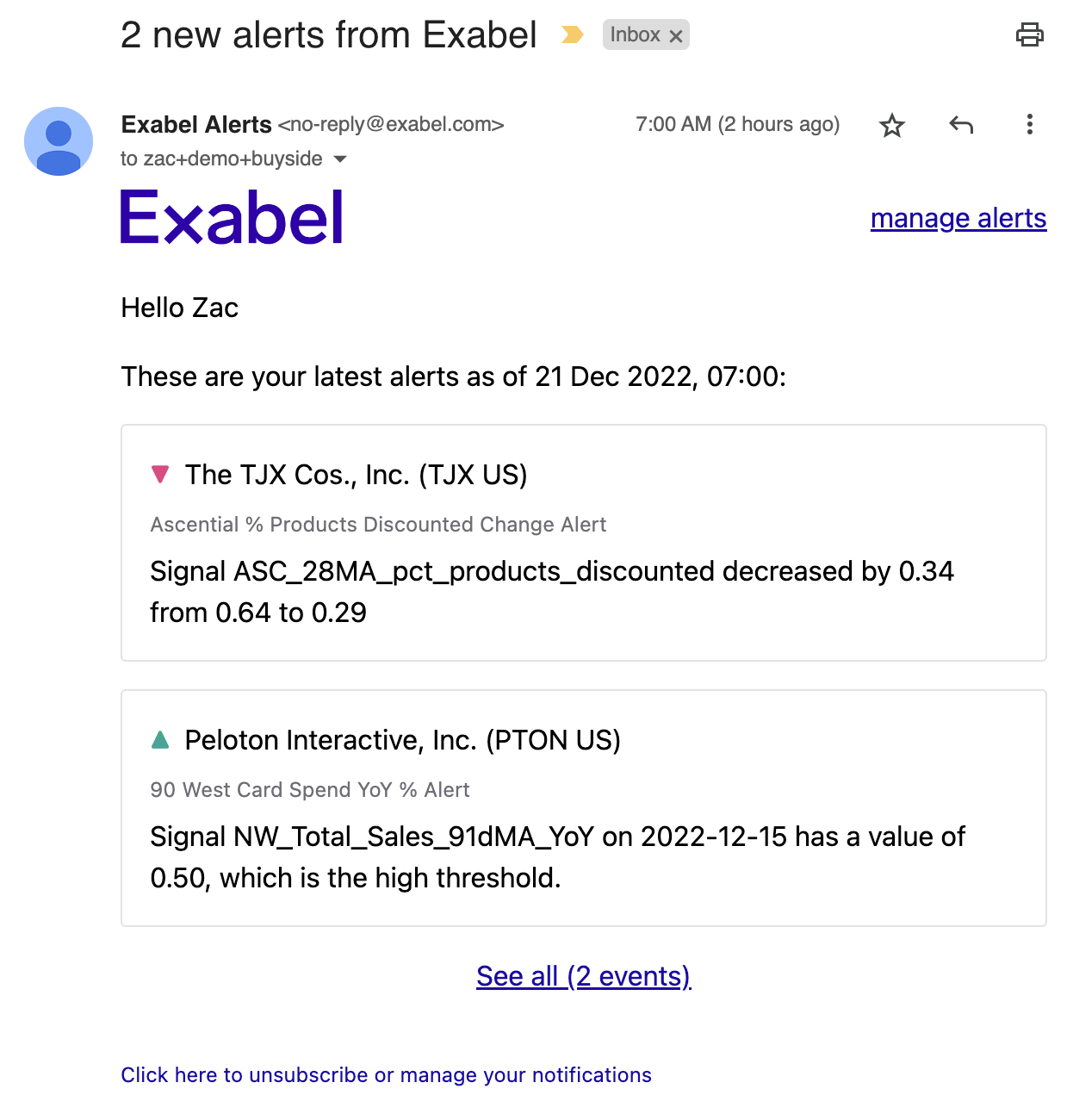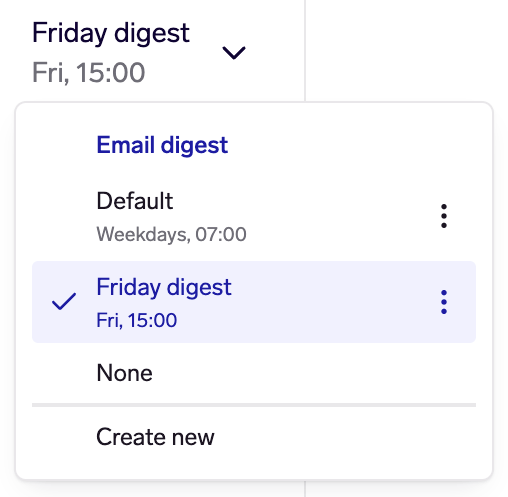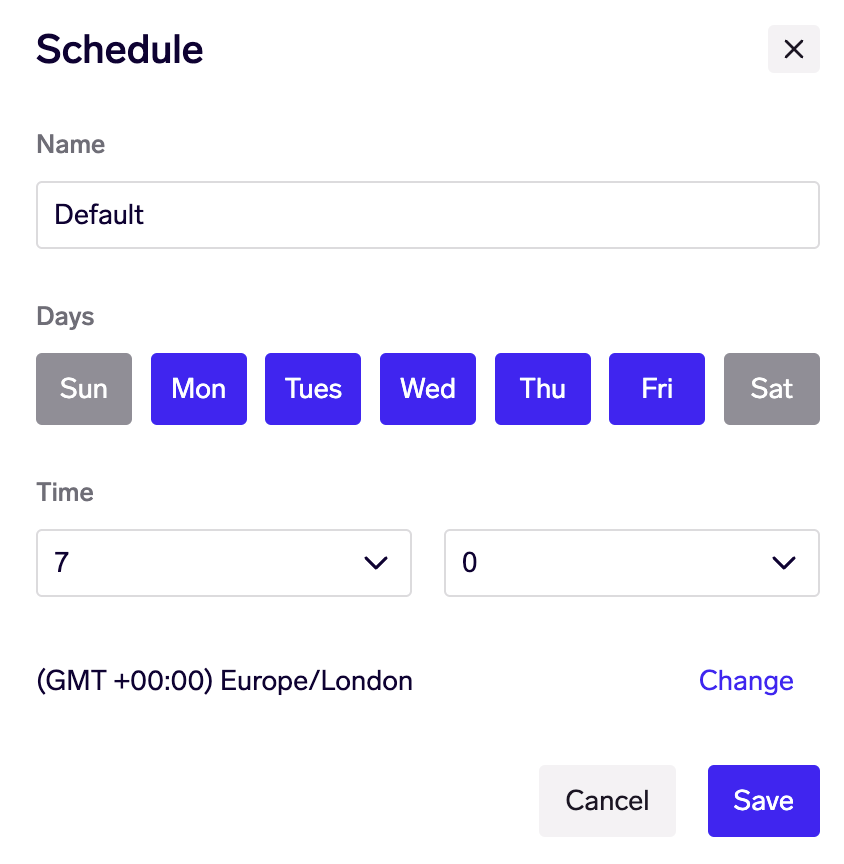Configuring Alerts
Requires the Insights Plus or Full Platform plansCreating and editing your own alerts requires you to be on the Insights Plus or Full Platform plans. Please contact us ([email protected]) to learn more!
Creating & Editing Alerts
Alerts are managed from the alert manager, accessed from the main menu under Data → Alerts (or click here).
Click on "Create alert" to create a new alert, or click on any of your existing alerts to edit it. This will bring you to the alert preview.

Alert manager to create & edit alerts
Alert Preview
The alert preview allows you to configure your alert universe, signal, trigger, and notifications. As you edit your alert, click the "Preview" button to preview the historical data for the signal on your universe, and when the alert might have triggered in the past.

Alert preview interface
Alerts are configured through the settings in the sidebar:
- Universe: select companies / entities, individually or through tags, that you want to monitor in the alert.
- Signal: select a signal from your Library, or use a custom expression.
- Trigger: pick a trigger type and set thresholds based on how you want your alert to behave, and how sensitive you want it to be.
- Email: optionally, setup email notifications for new alert events.
The preview shows up to 9 companies / entities at a time, and you may click on the chart for a specific entity to view it fullscreen. Historical alert events are shown as red or green markers on the charts.
When you're done configuring your alert, click "Save" to save your alert.
Editing an alert does not affect past alert eventsIf you edit the universe, signal, or trigger on an alert, this does not affect any alert events that were generated in the past. The old events will still appear in your feed, and show the alert configuration at the time the event happened. This allows you to have an accurate historical record of your alert events.
Email Notifications

Example alert email
You may wish to set up email notifications to get your latest alert events delivered to your inbox, without having to log in. Exabel allows you to create email digests that are scheduled to be sent at a day and time of your choice.
Email digests combine multiple alerts into 1 emailEach alert may be assigned to an email digest. When that digest is scheduled to be sent, it combines all the latest alert events that have happened since the last email, and sends that in a single email.
For example, you might set up a daily digest for high-urgency alerts on your portfolio exposures, and a weekly digest for lower-priority alerts on other companies on your watchlist.
Emails are always sent to your registered email address, from Exabel Alerts <[email protected]>.
By default, alerts you create will not have email notifications enabled. (Their alert events will still appear in your alert feed in the Exabel app.) To enable email notifications, click on the "Email" setting in either the alert preview or alert manager, and select an email digest for your alert.

Select an email digest for your alert
If doing this for the first time, you will have to create your first digest, by clicking on "Create new". This will prompt you to create a schedule by selecting days of the week and a time at which your alert should be sent. You should also set your local timezone so that notifications are sent at the right time.

You may also edit the schedule on an existing digest, which will affect all alerts that are configured on that digest.
Your timezone is a global, user-level settingThe chosen timezone will apply to all of your email digests.
Updated about 1 month ago